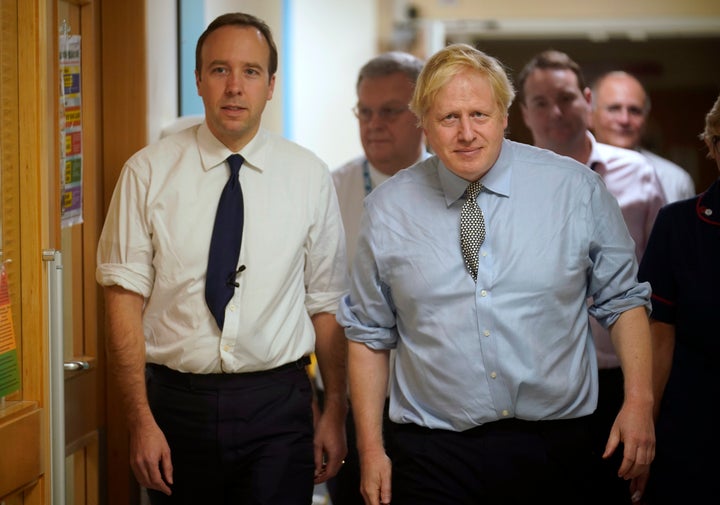Coronavirus has changed everything. Make sense of it all with the Waugh Zone, our evening politics briefing. Sign up now.
A new version of the long-awaited NHS Test and Trace smartphone app will be rolled out “in the next few weeks”, one of the service’s former chiefs has revealed.
Tom Riordan, who led the local tracing element of the programme until last week, said London would benefit particularly from the introduction of the technology because its residents are more likely to be in close proximity to strangers on Tubes and buses.
The UK app has been dogged by missteps and health secretary Matt Hancock had to abandon a previous version last month because of its incompatibility with Google and Apple privacy restrictions.
One minister said recently that the technology might not be ready until “the winter”, but Riordan suggested to BBC Radio 4’s Today programme that progress was much faster.
“It’s probably needed most in places like London, where people use public transport more than the rest of the country and we need the economy to kick start. I would expect that to start to be rolled out in the next few weeks,” he said.
“I think it will happen and it’s needed. It’s not the silver bullet [but] it’s something that could really help.”
Riordan has returned full time to his role as chief executive of Leeds City Council after spending months getting the local authority coordination of the NHS tracing service in place.
His “few weeks” timeframe suggests that a functioning NHS Test and Trace app could be up and running well ahead of the October 31 deadline set by Boris Johnson for half a million daily Covid tests to be available.
NHS Test and Trace has relied on manual contact tracing since it started in late May, with people who test positive for coronavirus phoned by clinicians and then asked for all their recent “close contacts”.
“Close contacts” are defined as anyone the subject spends more than 15 minutes within two metres of.
While such information is relatively easy to obtain in hospitals and care home settings it is proving more difficult for wider public settings where people don’t know each other.
A smartphone app would use bluetooth technology to log all those who have been in close contact with a positive case, and alert them to take a test or self-isolate for 14 days.

Riordan said that the current system was now “working pretty well” after local public health chiefs were granted access to data of individuals’ names and addresses.
“The German system is often quoted. [But] what we’ve created as well as the national Test and Trace is a very strong local system that is dealing with outbreaks really effectively every day,” he said.
Hancock promised in April that the NHSX app would be ready by “the middle of May”. He described it as “crucial”, while No.10 said it would be “a key part of the surveillance programme going forward”.
The app was piloted on the Isle of Wight but then downgraded to just the “cherry on the cake” of the wider NHS Test and Trace programme – and finally abandoned in early June in favour of a model more acceptable to Google and Apple.
Health minister Lord Bethell said on June 17: “We are seeking to get something going for the winter, but it isn’t a priority for us at the moment.”
The government says that its testing identified issues both with the NHS app and the Google/Apple technology, which did not estimate the two-metre distance in the way officials had hoped.
The Department of Health and Social Care has always insisted it was right to conduct the Isle of Wight pilot scheme as it “provided valuable information that we will now use to build an app that is right for the British public”.
Johnson has insisted the UK’s Test and Trace system ”is as good as or better than any other system anywhere in the world”.
Germany is one of the few countries in the world to have had major take-up of “Corona-Warn-App”, which has now been installed by around 16m people.
But with 83m Germans in total, experts say more than half the population need to have an app before it is truly effective.

